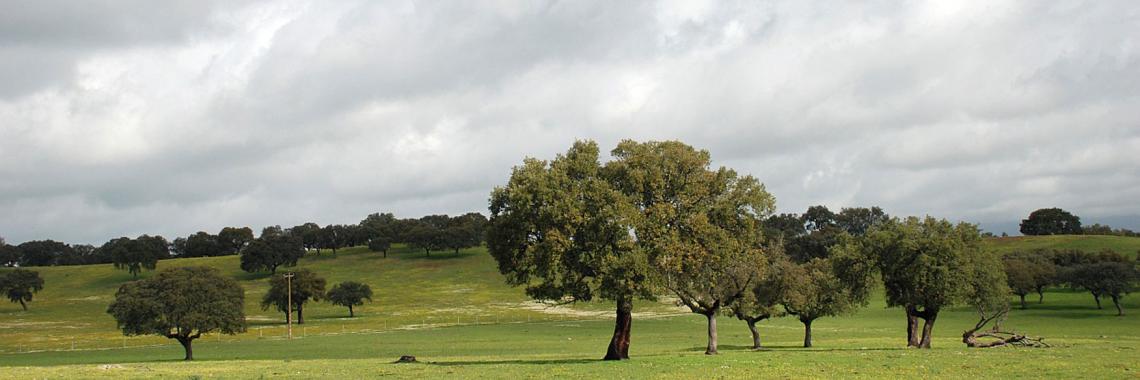Dehesas
Dehesas (Spanish), see also Montados (Portugese): The Dehesa systems are genuine forms of exploitation of the Mediterranean forests in which the native trees, holm oak, oak and cork oak, are spaced out or inserted in a continuum of grasslands. The resulting landscape, which combines mature ecological elements (oak trees) with other rejuvenated ones (grasslands) maintains a high biological diversity. A balance is thus obtained between exploitation and conservation making up a diverse landscape produced by the combination of small units with different agricultural uses. This dehesa-type mosaic of crops, grasslands, shrublands and scattered trees provides the necessary ecological conditions for a large number of plant and animal species.
Source: GÓMEZ-LIMÓN (1999), p. 166. ZIMMERMANN (2006), p. 364.
Database entries forDehesas
The entries are still in process, the e-atlas is still under development
Dehesas always existed but are now tremendously diminishing and are being replaced. This evolution is mainly due to the increase of intensive agriculture, to the development of enclosed fields and to the high level or urbanisation.









